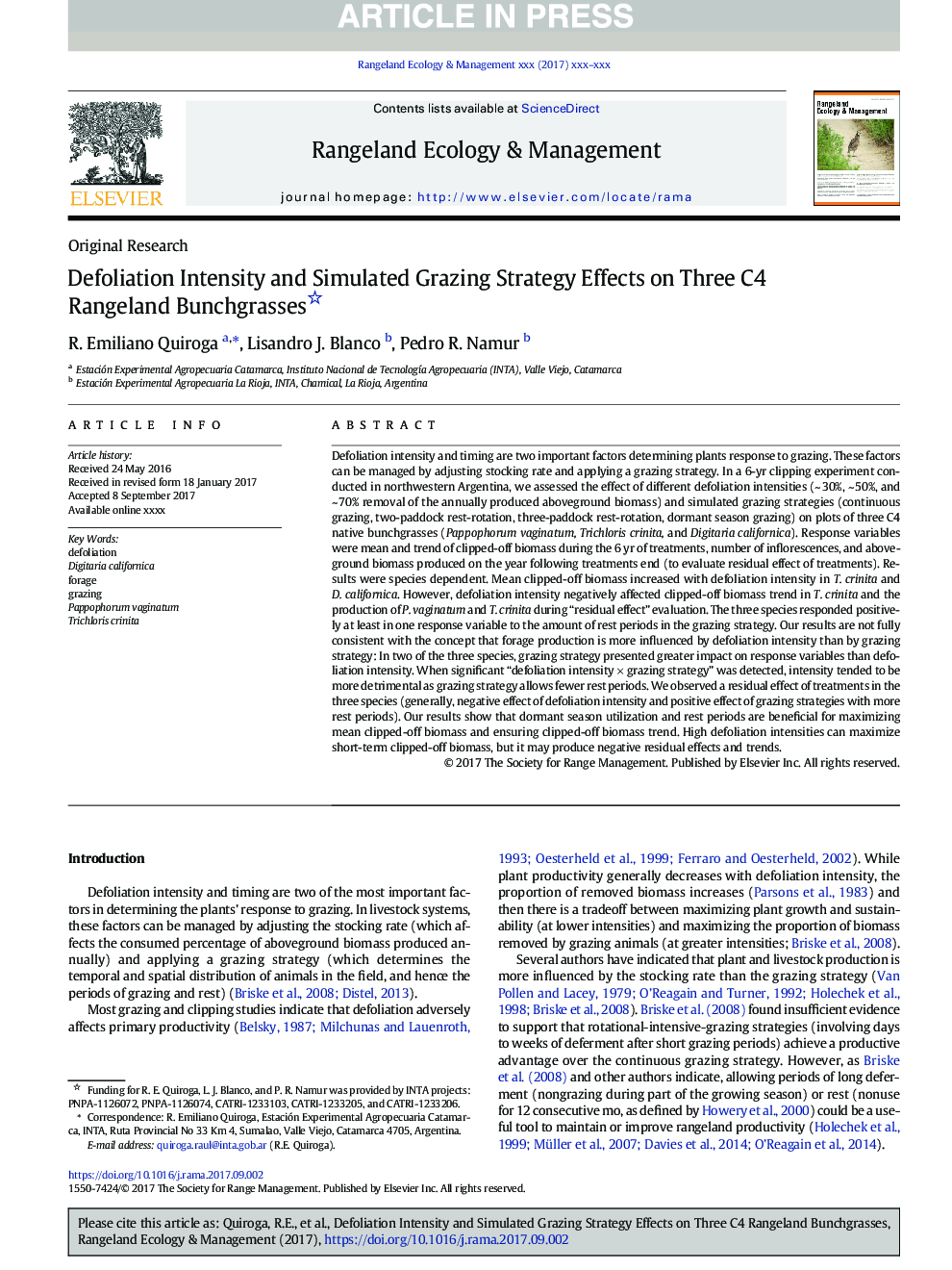| Article ID | Journal | Published Year | Pages | File Type |
|---|---|---|---|---|
| 8849642 | Rangeland Ecology & Management | 2018 | 9 Pages |
Abstract
Defoliation intensity and timing are two important factors determining plants response to grazing. These factors can be managed by adjusting stocking rate and applying a grazing strategy. In a 6-yr clipping experiment conducted in northwestern Argentina, we assessed the effect of different defoliation intensities (~ 30%, ~ 50%, and ~ 70% removal of the annually produced aboveground biomass) and simulated grazing strategies (continuous grazing, two-paddock rest-rotation, three-paddock rest-rotation, dormant season grazing) on plots of three C4 native bunchgrasses (Pappophorum vaginatum, Trichloris crinita, and Digitaria californica). Response variables were mean and trend of clipped-off biomass during the 6 yr of treatments, number of inflorescences, and aboveground biomass produced on the year following treatments end (to evaluate residual effect of treatments). Results were species dependent. Mean clipped-off biomass increased with defoliation intensity in T. crinita and D. californica. However, defoliation intensity negatively affected clipped-off biomass trend in T. crinita and the production of P. vaginatum and T. crinita during “residual effect” evaluation. The three species responded positively at least in one response variable to the amount of rest periods in the grazing strategy. Our results are not fully consistent with the concept that forage production is more influenced by defoliation intensity than by grazing strategy: In two of the three species, grazing strategy presented greater impact on response variables than defoliation intensity. When significant “defoliation intensity à grazing strategy” was detected, intensity tended to be more detrimental as grazing strategy allows fewer rest periods. We observed a residual effect of treatments in the three species (generally, negative effect of defoliation intensity and positive effect of grazing strategies with more rest periods). Our results show that dormant season utilization and rest periods are beneficial for maximizing mean clipped-off biomass and ensuring clipped-off biomass trend. High defoliation intensities can maximize short-term clipped-off biomass, but it may produce negative residual effects and trends.
Keywords
Related Topics
Life Sciences
Agricultural and Biological Sciences
Agricultural and Biological Sciences (General)
Authors
R. Emiliano Quiroga, Lisandro J. Blanco, Pedro R. Namur,
